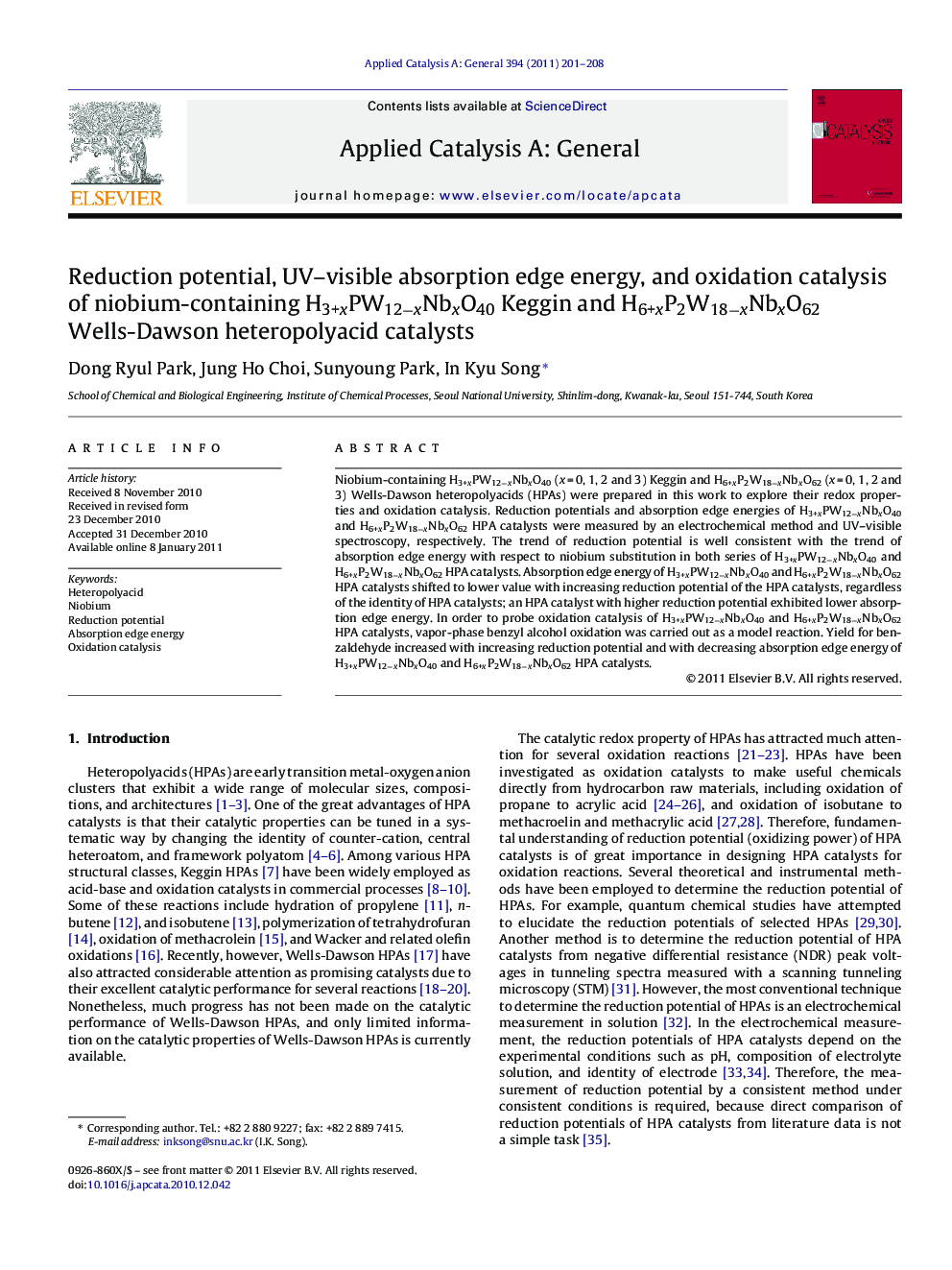| کد مقاله | کد نشریه | سال انتشار | مقاله انگلیسی | نسخه تمام متن |
|---|---|---|---|---|
| 41481 | 45890 | 2011 | 8 صفحه PDF | دانلود رایگان |

Niobium-containing H3+xPW12−xNbxO40 (x = 0, 1, 2 and 3) Keggin and H6+xP2W18−xNbxO62 (x = 0, 1, 2 and 3) Wells-Dawson heteropolyacids (HPAs) were prepared in this work to explore their redox properties and oxidation catalysis. Reduction potentials and absorption edge energies of H3+xPW12−xNbxO40 and H6+xP2W18−xNbxO62 HPA catalysts were measured by an electrochemical method and UV–visible spectroscopy, respectively. The trend of reduction potential is well consistent with the trend of absorption edge energy with respect to niobium substitution in both series of H3+xPW12−xNbxO40 and H6+xP2W18−xNbxO62 HPA catalysts. Absorption edge energy of H3+xPW12−xNbxO40 and H6+xP2W18−xNbxO62 HPA catalysts shifted to lower value with increasing reduction potential of the HPA catalysts, regardless of the identity of HPA catalysts; an HPA catalyst with higher reduction potential exhibited lower absorption edge energy. In order to probe oxidation catalysis of H3+xPW12−xNbxO40 and H6+xP2W18−xNbxO62 HPA catalysts, vapor-phase benzyl alcohol oxidation was carried out as a model reaction. Yield for benzaldehyde increased with increasing reduction potential and with decreasing absorption edge energy of H3+xPW12−xNbxO40 and H6+xP2W18−xNbxO62 HPA catalysts.
Figure optionsDownload high-quality image (179 K)Download as PowerPoint slideResearch highlights▶ H3+xPW12−xNbxO40 and H6+xP2W18−xNbxO62 heteropolyacids were prepared. ▶ Reduction potentials and UV–visible absorption edge energies were measured. ▶ Yield for benzaldehyde increased with increasing reduction potential. ▶ Yield for benzaldehyde increased with decreasing absorption edge energy.
Journal: Applied Catalysis A: General - Volume 394, Issues 1–2, 28 February 2011, Pages 201–208